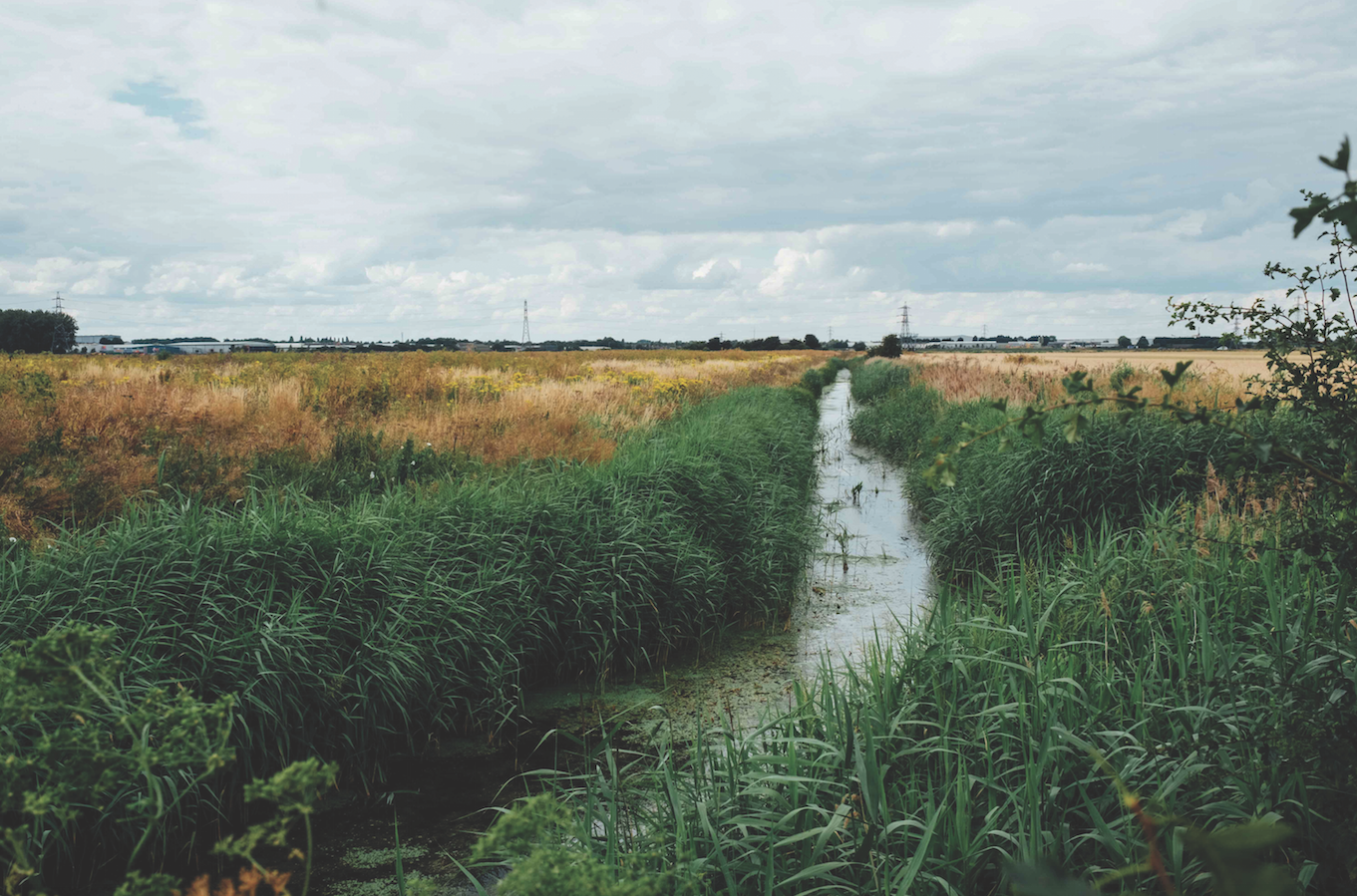When anxiety took hold of his life, writer Joe Minihane found that cold water swimming provided an unexpected antidote.
Aside from a solitary dog walker, Brighton’s Kemptown beach is mine alone. Stripped down to my bright orange swimming shorts, the wind whipping my hair across my forehead, I take long strides into the searing cold water. It’s March, the month when the sea is at its most frigid, an entire winter pulled into the depths, ready to slide itself over my skin, into my bones. The breath is punched from my chest as I give myself up to the English Channel’s icy embrace. I count my strokes and slow my breathing, my eyes on the horizon. Herring gulls bob in the swell, oblivious to this human interloper. I drop my head beneath the surface and feel the rush as I emerge cleansed, gasping, eyes throbbing. I turn and swim for shore.
I’ve been indulging in this ritual for seven years. More recently here, in my adopted home town on the south coast, but originally in the bathing ponds on London’s Hampstead Heath. And then across the UK on a two-and-ahalf-year journey to retrace Roger Deakin’s seminal Waterlog. I suffer from anxiety. On those first excursions to Hampstead, initially on summer afternoons to escape the heat and then wet autumn mornings as my love for the water bloomed, I found the fix for an issue that at the time I didn’t understand and didn’t want to. I’ve always been an anxious person. I’m adept at placing myself under enormous pressure to live up to standards that can’t be attained. To be perfect. To control and be responsible for everything around me. I compare myself relentlessly with others and always find myself coming up short. My mind works at an exhausting pace and, at the time of my first outdoor swims, was moving so rapidly that it sent me to a crashing standstill.
I didn’t believe I was good enough in my role as a freelance writer, as a partner, as a friend. I had let the speed of my mind dictate the pace of my life until I could not keep up and found myself anxious, depressed and unable to carry on. In the water, though, I found emotional stillness. There is a simplicity in the act of swimming, especially wild swimming. At its core it is the act of survival. Your limbs need to move in order for you to stay alive. There is nothing else. I would place my feet on the cold steel steps of the pond and drop into the flotsam, the unknowable green beneath me, and feel a sense of calm I didn’t know on dry land.Worries about my professional life, my perceived failure as a journalist and as a person, were cleansed by the head waters of the old River Fleet. The coldness of the water would shock the anxiety from my system and I would walk across the Heath as if in a daze, the world feeling less overwhelming. And so I found a new obsession, one which brought me to Waterlog, Roger Deakin’s 1999 classic about his “swimmer’s journey through Britain” and an idea that would help see me through to a life less frantic.
Deakin’s book is essentially a homage to the subversive. Imbued with an anti-authoritarian spirit, Deakin stole swims in private rivers, swam across estuaries at great personal risk and delved into potholes to see how the water worked its way into the Earth. All to get a “frog’s eye view of Britain”. For him, the water held curative properties. “Water has always held the magical power to cure… I can dive in with what feels like a terminal case of depression, and come out a whistling idiot,” he writes in Waterlog’s introduction. I was gripped by this line. It was the catalyst for me to follow in Deakin’s breast strokes. To see the rivers, bays, lidos and lakes he had swum in. To immerse myself into something impossibly grand and try to find a way out of the anxiety that had become utterly debilitating. The journey became all consuming.
It began life as a blog, Waterlog Reswum, then became a book, Floating: A Return to Waterlog. It reignited old friendships with people who had a shared passion for cold water, fixing the loneliness I hadn’t realised I felt so keenly as a freelancer in London. It allowed me to become steeped in nature, too. I swam alongside great crested grebes at Highgate Pond. I watched reed warblers feed their young as I nosed along the River Lark in the Cambridgeshire Fens. I sat beneath a hovering kestrel, joyful tears pricking my eyes following a cold swim in an isolated pond near the Isle of Ely. The journey taught me to face dangers and fears as a way of conquering my anxiety. On a base level, this meant entering extremely cold bodies of water with little more than shorts and a strong dose of gumption for protection. For me, the cold is a key part of wild swimming’s restorative power. It resets my mind in a way that a heated pool cannot. The dopamine and endorphin rush is the purest high. An initial spike followed by a slow burn that ensures I cannot rush, cannot allow my mind to work at the dangerously fast pace it often wants to. Deakin’s anti-authoritarianism seeped into me, too. At a millhouse on the Avon, I jumped from a firstfloor window into the brown murk and emerged delirious. In a private stretch of the Itchen, kept for the sole use of fishermen, I bathed in the purest water I’d ever seen.
Feeling the power of rebellion match the rush of a cold swim helped me let go of the inhibitions that often made me anxious. I swam in over 70 places retracing Waterlog. The adventure gave me the courage to tell others about my anxiety, and seek professional help to help me stay level when I couldn’t get into the water. Within months of journey’s end, I found myself living by the sea in Brighton. I began swimming almost every day, as high summer slipped into grimy winter. In summer, the path to the water is short. As the nights draw in, that path feels longer, strewn with obstacles: the wind, the bitter cold, the galumphing waves. The list of rituals grow, as a way of assuaging my anxiety about getting into the water, but also to force me in and make me feel less anxious in the first place. Pebbles are kicked to procrastinate. Clothes are folded methodically for speedy redressing. Entrance to the water is swift, less luxuriant than in the summer months. But the buzz, the release, is harder won and therefore sweeter. Swimming in Brighton feels different compared with exploring Roger’s world, but this intimacy brings with it its own charms. It is my own space and yet it is so beyond me, so vast, that I can only surrender to it. I have no control. I must simply respect it and give myself over to its power. To find joy in my insignificance. To float. I don’t stay in for long. There is not a lot of me and the cold works its magic quickly. Perspective returns. Balanced, cleansed, it leaves me ready to take on the world.
Words: Joe Minihane







